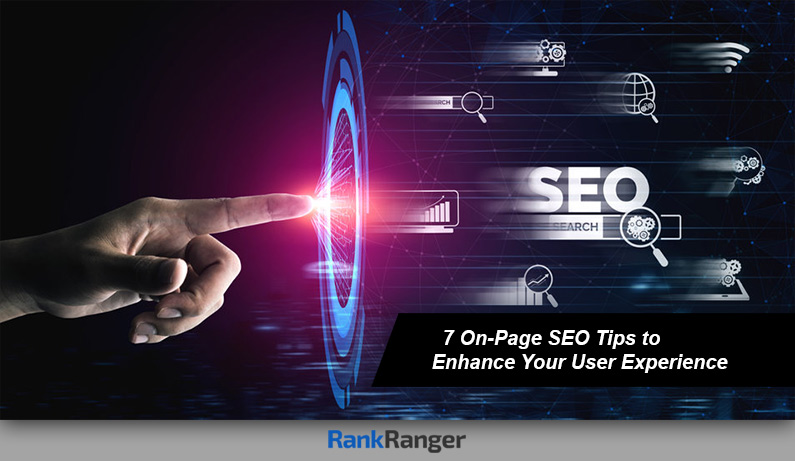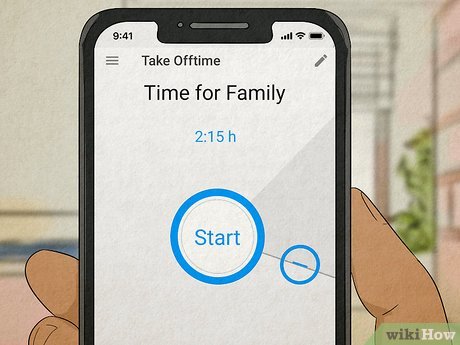1. Write unique and compelling title tags for each page on your website. The title tag is the most important on-page SEO element.
2. Use meta descriptions to entice clicks from SERPs.
Meta descriptions are still a valuable way to influence your CTR.
3. Optimize your content with keywords. Use keyword research to determine which terms your audience is using to find your content, then incorporate those keywords into your posts and pages.
4. Structure your URLs for both users and search engines. Short, descriptive URLs are better for both users and search engines than long, complicated ones.
5. Use header tags effectively.
Search engine optimization is important for any website that wants to rank high in search engine results pages. However, SEO is a complex and ever-changing field, and it can be difficult to keep up with the latest trends and best practices. That’s why we’ve compiled a list of on-page SEO tips to help you optimize your website for better search engine visibility.
1. Use keyword-rich titles and descriptions.
Make sure your website’s title tags and meta descriptions are rich with relevant keywords for your target audience. This will help your site show up in more search engine results pages (SERPs) when people search for terms related to your business or website.
2. Optimize your images.
In addition to using keyword-rich text, you can also optimize your website’s images for better search engine visibility. Include keywords in image file names and alt text so that search engines can index them properly.
3. Useheader tags wisely .
Header tags (H1, H2, etc.) are used to structure content on web pages. Search engines give more weight to content contained within H1 tags, so be sure to use them wisely by including relevant keywords for your target audience.
On Page SEO Checklist 2023: Optimize Every Page on Your Site (Ultimate Guide)
What are the 3 Most Important on Page Seo Factors?
Search engine optimization (SEO) is the process of improving the ranking of a website on search engines. The higher the ranking, the more likely people are to find the website. There are two types of SEO: on-page and off-page.
On-page SEO refers to optimizing a website’s content and structure to make it more visible to search engines. Off-page SEO involves building links from other websites to yours.
The three most important on-page SEO factors are title tags, meta descriptions, and header tags.
Title tags are the most important factor, followed by meta descriptions and header tags. All three factors work together to improve a website’s ranking on search engines.
Title tags are used to tell search engines what a webpage is about.
They appear in the title bar of a browser and in the head section of a webpage’s code. Meta descriptions give people an idea of what a webpage is about before they click on it. They also appear in the head section of a webpage’s code but not all browsers display them.
Header tags help break up a webpage’s content into sections which makes it easier for people to read and understand. They also help search engines understand what each section is about so they can index it properly.
What are the Top 5 on Page Seo Factors?
There are a number of different factors that can affect your website’s ranking on search engine results pages (SERPs). Here are five of the most important on-page SEO factors to keep in mind when optimizing your site:
1. Title tags – The title tag is one of the most important on-page SEO elements.
Make sure to include relevant keywords and phrases in your title tags, as this will help improve your click-through rate (CTR) and organic search visibility.
2. Meta descriptions – In addition to title tags, meta descriptions are also key to improving your CTR. Write compelling and informative meta descriptions that include relevant keywords and phrases to entice users to click through to your website.
3. Headings and subheadings – Use heading tags (H1, H2, etc.) to structure your content in a way that is easy for both users and search engines to understand. This will also help break up large blocks of text, making it more skimmable for readers.
4. Alt text – Whenever you add images or other media files to your website, be sure to include alt text that accurately describes the content of those files.
This helps both users and search engines understand what each file is about.
5. URL structure – Use clean and descriptive URLs that include relevant keywords whenever possible.
What are Top 10 on Page Seo Factors?
SEO is the practice of optimizing a website to rank higher in search engine results. The main purpose of SEO is to drive traffic to your website.
There are many different factors that go into ranking a website.
Here are 10 of the most important on-page SEO factors:
1. Title Tags
2. Meta Descriptions
3. Header Tags
4. Keywords
5. Image Alt Text
6. Internal Links
7. External Links
8. Anchor Text
9. Site Structure
What are the 3 C’S of Seo?
There’s no denying that SEO is complex. However, understanding the three c’s of SEO will help simplify things and give you a clear path to success. Here are the three c’s of SEO and what they mean for your business:
1. Content
Creating high-quality content is at the heart of any successful SEO strategy. After all, without great content, there would be nothing for people to find when they search online.
But what exactly makes for great content? There are a few key elements:
Your content must be relevant to your audience.
Write about topics that your target customers are interested in reading about.
Your content should be well-researched and accurate. Don’t just regurgitate information that you found elsewhere on the internet – take the time to do your own research and write original content.
Your content needs to be engaging and readable. No one wants to read a boring, dry article. Write in an engaging tone and break up your text with plenty of white space so it’s easy on the eyes.
2. Crawlability
In order for your website’s pages to show up in search engine results, Google (and other search engines) need to be able to crawl them first. That means ensuring that your site is free from technical errors that could prevent Google from being able to access your content properly.
A few things to keep in mind: Use proper tagging and structure when coding your website so Google can easily understand what each page is about Ensure all images on your site have alt text so Google can index them Use descriptive titles and meta descriptions for each page Make sure all links on your site are working properly Use sitemaps to help Google find all of the pages on your website
3 . Capacity or “Can” Do Attitude The third “C” actually stands for capacity or what we like call a “can do attitude.” In order words having ability seeing projects through till completion . This includes everything form developing creative strategies , writing quality copy , performing research , managing projects & more importantly meeting deadlines . Clients always want know if agency has ability handle their project & complete it successfully without any issues . Therefore its important build trust relationship with client by demonstrating not only talk but also take action deliverables .

Credit: 4virtus.com
On-Page Seo Checklist
Are you looking to improve your on-page SEO? If so, this checklist is for you!
1. Optimize Your Title Tags
Your title tags are one of the most important on-page SEO factors. Make sure to include your target keyword in your title tag and keep it under 60 characters.
2. Optimize Your Meta Descriptions
Like your title tags, your meta descriptions are also important for on-page SEO. Again, make sure to include your target keyword and keep your meta descriptions under 160 characters.
3. Use Keyword-Rich Headings
Using keywords in your headings (H1, H2, etc.) is a great way to signal to Google what your page is about and help improve your search ranking. Just don’t go overboard – too many keywords will result in a penalty from Google. aim for 1-2% keyword density.
4. Optimize Your Images
Make sure to include relevant keywords in your image file names and fill out the alt text field with a brief, keyword rich description of each image. This will help Google index your images and improve their appearance in search results.
. 5 Improve Your Page Loading Speed Page loading speed is an increasingly important factor in search rankings . Try using a tool like Pingdom or GTmetrix to test your page loading speed and identify ways to improve it.
. 6 Use Internal Links Linking to other pages on your website helps users navigate between pages onyour site and helps search engines understand the structure ofyour website . Try adding 2-3 internal links per post/page.. 7 Add Social Share Buttons Adding social share buttons makes it easy for visitors to shareyour content on their favorite social media sites . This can help increase engagement and drive more traffic toyour site .. 8 Implement Schema Markup Schema markup is code that helps search engines understand thecontent onyour page . implementing schema can be complicated , but it can pay off by helpingyour content appear in richer snippets in search results .. 9 Monitor Your Site’s Search Rankings Regularlymonitoring y our site ’s search ranking s allows you toget an idea of how welly ouron -page SEO efforts are paying off . You can use tools like MozRank Checker or SERPS COM Rank Tracker t o tracky our progress over time ..
Off-Page Seo Checklist
If you’re looking to improve your off-page SEO, this checklist is for you!
1. Make sure your website is optimised for search engines
Make sure your website is well designed and easy to navigate.
Use keyword-rich titles and descriptions to help search engines index your site correctly.
2. Build high quality inbound links
Link building is an important part of off-page SEO.
Focus on getting high quality inbound links from reputable websites. Avoid link farms and other low quality link sources.
3. Promote your content across the web
Social media, forums, blogs, and other websites are great places to promote your content. Get involved in relevant discussions and make sure to include a link back to your site when appropriate.
On-Page Seo Checklist 2022
It’s no secret that SEO is constantly evolving. What worked last year may not work this year, and what works today may not work next year. That’s why it’s important to stay up-to-date on the latest trends and best practices.
To help you do that, we’ve put together an on-page SEO checklist for 2022. This checklist covers all the basics of on-page optimization, from keyword research to title tags to meta descriptions. By following these guidelines, you can be sure that your website is as search engine friendly as possible.
Keyword Research: The first step in any SEO campaign is keyword research. You need to identify the keywords that potential customers are using to search for businesses like yours. Once you know what keywords to target, you can start optimizing your website for those terms.
Title Tags: Title tags are one of the most important elements of on-page optimization. They should be unique and descriptive, and they should include your target keywords. Make sure your title tags are no longer than 60 characters, including spaces.
Meta Descriptions: Meta descriptions are brief summaries of your web pages that appear in search results. Like title tags, they should be unique and descriptive, and they should include your target keywords. Keep your meta descriptions under 160 characters so they don’t get cut off in search results.
Conclusion
If you’re looking to improve your on page SEO, here are a few tips to keep in mind. First, make sure your title tags and meta descriptions are clear and concise. Second, use keyword-rich titles and descriptions.
Third, use header tags wisely. Fourth, optimize your images. Fifth, take advantage of social media sharing buttons.
Sixth, use internal linking. Lastly, make sure your website is mobile-friendly.



